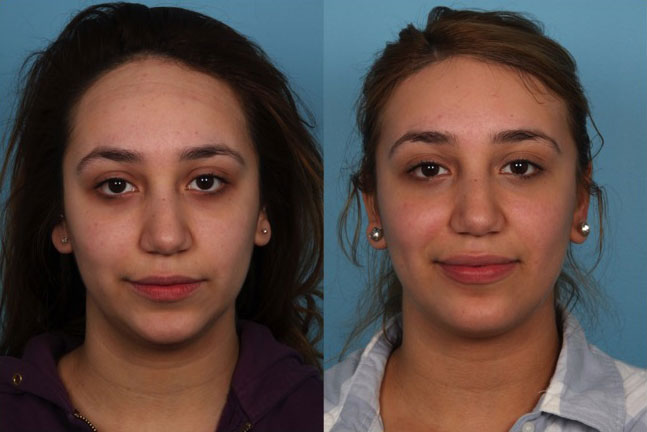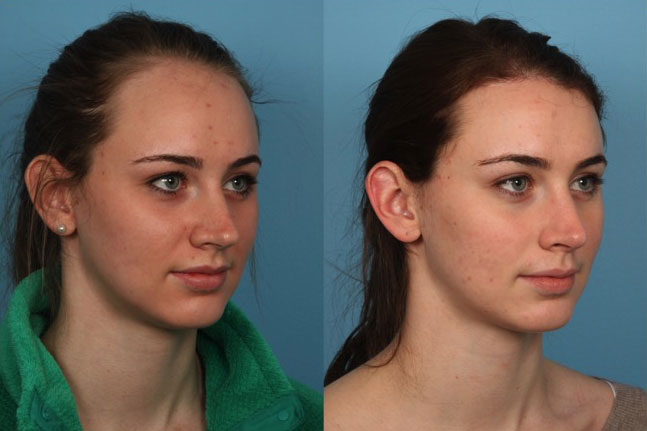Overview
Forehead reduction surgery is also referred to as hairline lowering surgery or forehead contouring surgery, which is a cosmetic surgical procedure to decrease the height of the forehead. This transformation surgery is in demand for people who want to improve facial harmony, balance their features, or even address specific aesthetic concerns.
We look into the details surrounding forehead reduction surgery-from the procedure itself to recovery, associated risks, and also some benefits.
What is Forehead Reduction Surgery?
Forehead reduction surgery is a surgical procedure that reduces the vertical height of the forehead by pulling down the hairline on the scalp. This is done with the precise adjustment of scalp and forehead tissue. Many people with high hairlines or large foreheads seek this procedure out, which can be caused by genetics, hair loss, or many other things.
This surgery may also be complementary for patients undergoing gender-affirming facial feminization surgery, as it creates a softer and more traditionally feminine appearance.
Who is a Candidate for Forehead Reduction Surgery?
The best candidate for forehead reduction surgery typically has all or some of the following:
- Good Health: No chronic medical condition is present that could affect healing following surgery.
- Stable Hairline: The hairline is stable, with no significant family history of progressive hair loss.
- Realistic Expectation: Correct interpretation of what the surgery is capable of and realistic expectations regarding the outcome.
- Good scalp laxity: sufficient scalp elasticity that will enable the hairline to be safely lowered.
The procedure
- Preoperative Consultation: The process begins with an in-depth consultation. The surgeon evaluates the hairline, scalp laxity, and facial structure of the patient. During this phase, patients discuss their goals and review the surgical plan.
- Anesthesia: Most forehead reduction surgeries are performed under general anesthesia or local anesthesia with sedation to keep the patient comfortable during the procedure.
- Incision Placement: A trichophytic incision will be made following the hairline. This is done to minimize visual scarring, as hair should be able to grow through this incision site.
- Tissue Adjustment: It involves partial removal of the skin on the forehead, adjustment, and realignment of scalp tissue, as well as the hairline to the desired level. The careful suturing assures exact alignment.
- Closure: It is then closed, either with sutures or staples, and subsequently dressed to protect the incision during its initial days of healing.

Recovery Process
1. Immediate PostOperative Care
Most patients have mild swelling and bruising and some discomfort that can be controlled with prescribed pain medications.
The dressing is usually removed in a few days, and the patients are advised to keep the area clean.
2. Healing Timeline
- 1-2 Weeks: Patients are generally able to resume light activities within one to two weeks. Most of the swelling and bruising has dissipated by this time.
- 3-4 Weeks: Patients can return to routine activities although the strenuous activities must still be avoided.
- 3-6 Months: Full results become visible once the incision heals and hair regrows at the incision line.
Benefits of Forehead Reduction Surgery
- Improved Facial Harmony: Demonstrates better balance among facial features.
- Boosts Confidence: It helps people to be comfortable with their appearance.
- Customizable Results: The amount of reduction depends on an individual’s unique aesthetics.
- Minimal Scarring: Scarring is minimal by using advanced techniques that ensure the scars blend soft and natural with hair growth.
Worst Day of Pain After Wisdom Tooth Extraction | Coping and Recovery
How to Sleep with UTI Discomfort | 14 PRO Tips
Risks and Considerations
Like all other surgeries, forehead reduction surgery also poses a range of possible risks, including the risk of:
- Infection of the incision site.
- Numbness of the forehead or scalp, which may be temporary or permanent.
- Unfavorable scarring.
- Alopecia along the line of incision.
- Poor results, thereby requiring revision surgery.
The patients should ensure a board-certified experienced surgeon for minimal risks with maximum optimal results.
Forehead Reduction Surgery or Its Alternative
While forehead reduction surgery is very effective, there are also nonsurgical and other alternative options for individuals not ready for the surgery:
- Hair Transplant: These are employed to provide the false appearance of a low-level hairline by implantation of hair follicles.
- Hairstyling: Some of the hairstyles tend to reduce the height of the forehead optically.
- Botox or Fillers: Botox or fillers may be temporary solutions that can adjust the perception of forehead proportions.
Cost of Forehead Reduction Surgery
The cost of forehead reduction surgery falls between $7,000 and $15,000. These factors include experience and expertise of the surgeon, complexity in performing the surgery, and location where one is getting it from. It usually includes the charge by the surgeon, anesthesia, and the facility charges.

FAQs About Forehead Reduction Surgery
1. Will the results be natural?
Yes, forehead reduction surgery, when done by an expert surgeon, produces natural-looking results with minimal noticeable scarring.
2. Can this surgery be combined with other procedures in a single stage?
Yes, many patients often combine forehead reduction surgery with brow lifts, facelifts, or hair transplants to completely revitalize the face.
3. How long do the results last?
Results from forehead reduction surgery usually last. Aging, along with other influences, will subtly change your appearance over time.
4. Is there an age limit?
While the procedure is performed on adults, candidates should be over 18 years in good health.
Conclusion
Forehead reduction surgery is for feature harmonization and the building up of self-confidence. It is an extremely safe and effective treatment due to continuous upgrading of surgery methods, with lifetime lasting results. If you’re considering this surgery, discuss your goals with a board-certified plastic surgeon to assess your candidacy and formulate an individualized treatment plan. If done under proper expertise and care, forehead reduction surgery will be able to give you what you want.
